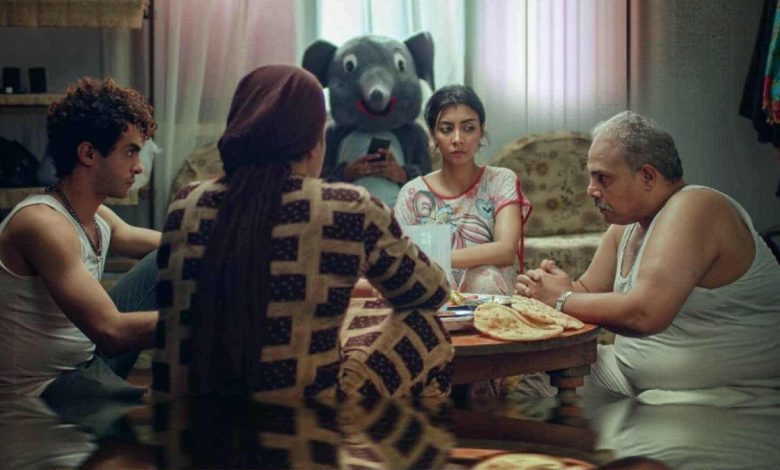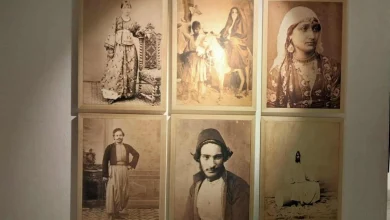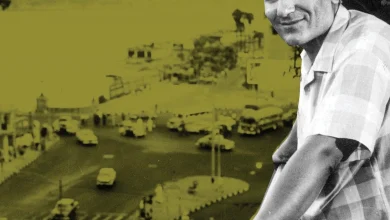“Mariam’s Choice” and the “Zawya” sit-in: a crime that speaks for itself!

The apology issued by the management of the Zawya cinema for the behavior of some of its employees toward a young director who decided to protest alone in front of the cinema is perhaps one of the best examples of good behavior we have seen in our artistic and cultural life recently. Violence and “rudeness” have become a way of life in our society, to the point that one is surprised to find someone apologizing to another or to see civilized behavior from someone, as if it were something unexpected and rare.
When I saw the video of the director being pushed and expelled from the cinema, I felt sorry for the young man, and I remembered that I had seen his controversial film at the Alexandria Film Festival two years ago, as a member of the Egyptian competition jury alongside the artist Sherine and the Alexandrian filmmaker Dina Abdel Salam. The film won the admiration of the jury and three awards: the Jury Prize for Best Director (Mahmoud Yehia), Best Actor (Mohamed Radwan), and Best Actress (Rasha Sami).
When I watched the video, I felt sorry for the film and its creator, and I remembered many young people whose films I had watched in recent years. Some of these films participated in festivals and won awards in Egypt and abroad, but most of them did not get the chance to be shown publicly in cinemas or on platforms.
***
I felt sorry for the young man and his colleagues because of the hardship felt by an independent filmmaker who has spent years of his life, and perhaps all his money, making a film. The least he deserves is to show it to people so they can give their opinion. But after all that, he cannot find even one theater to screen his film.
I imagined the long, difficult weeks and months that Mahmoud Yahya went through as he sought to find a distributor to screen his film or a platform to buy it, at a time when industry professionals complain about the lack of Egyptian films being produced and the absence of Egyptian films in theaters. and the scarcity of new films being shown on platforms, which is one of the many strange paradoxes that fill our cinematic life!
I imagined the young man knocking on the doors of distributors and platform owners to no avail, despair creeping into his heart and gray hairs appearing on his head, as has happened and continues to happen to dozens of filmmakers whose dreams and ambitions have been crushed by the circumstances of the film industry. I understood the decision he made when the management of Zawya Cinema, the last resort for independent filmmakers in Egypt, which for years has had a policy of supporting and encouraging non-commercial artistic works, refused to screen his film.
***

The young man did not understand the cinema’s refusal to screen his film, not only because every filmmaker considers it great, but also because the film had already been recognized by the Alexandria Film Festival and some other festivals outside Egypt. Therefore, he decided to protest, to shout, to ask for help and assistance, and he is excused for doing so.
He is excused despite the obvious fact that no one can force a cinema to show a film it does not want to. But the issue is more complex than this naive and insolent statement. It is not only about the right of a cinema, but also about a general atmosphere of exclusion and persecution and a set of well-known paralysis in production and distribution that has monopolized the industry and is about to destroy it. He is excused for not going to protest to these commercial entities that are closed off in their paralysis, but he decided to go to those who are like him, lovers of cinema and art, who are close to him in age and thought, and he decided to cry out, asking them for help and a response.
***
As a neutral party who watched the film, as I have watched many Egyptian films shown at Zawya Cinema, I can say that Mariam’s Choice is a very good film and deserves to be shown at Zawya and elsewhere. I hope that the cinema owners will reconsider their decision to reject the film.
As a neutral party, I can also imagine the reason for their rejection, as the film suffers from some technical problems resulting from poor production, in terms of sound and color correction, and editing that needs some work. These are minor flaws compared to the film’s artistic level, and perhaps it was worth it for a professional company to purchase the distribution rights and fix them, As is the case, incidentally, throughout the world, at the level of major distribution companies and films.
These minor flaws, as I recall, prevented our committee from awarding the film the grand prize (which is usually awarded to the production) and decided to award the prizes to the director and actors. Critic Dr. Walid Seif wrote at the time, wondering why the film was not given the first prize… and this is the answer!
***
Perhaps Mahmoud Yahya needs to have a frank discussion with cinema officials about why his film was rejected and seek a solution if possible. From an artistic and popular point of view, I believe that Mariam’s Choice is flawless and better than many films shown in the market and at Zawya Cinema. In fact, I think it is a beautiful film that I still remember, along with the emotional state I was in when I watched it two years ago!
The title of the film echoes that of the famous American film Sophie’s Choice (directed by Alan Pakula, 1982), in which Meryl Streep plays the role of a mother of two children, a boy and a girl, in concentration camps, where a Nazi officer forces her to choose between only one of her children.
But Mariam’s Choice is of a different kind. Her sick employer asks her to help him die in exchange for a million pounds, but she is afraid of becoming a murderer. Maryam is also a mother and a member of a poor family consisting of a harsh father, two teenage sons, and a daughter of marriageable age. The family struggles with poverty as well as with each other, especially the eldest son with his father. The film is interspersed with surreal and bizarre moments that elevate it to the level of poetry. It is also characterized by the quality of the acting, especially by Mohamed Radwan, who plays a serious and complex role that differs from his light comedic roles. Among the new or lesser-known faces are Rasha Sami as the mother and Ahmed Abu Zeid as the rebellious son.
***
One of the film’s most memorable scenes is at the beginning, where the family is sitting down to eat while one of the sons wears a strange and frightening elephant mask (in the style of Richard Kelly’s Donnie Darko, 2001). and a scene at the end in which the father is beaten and robbed by thieves while the son sits in the next room, occupying half the frame, hearing nothing because he has headphones on.
Perhaps the best thing about the film is the blend of realism, represented by the accurate portrayal of poor working-class life and natural acting, and surreal fantasy moments, which create a sense of strangeness and constriction that reflects the characters and their world.
Mariam’s Choice is a good film that deserves to be seen, and I hope that distributors and platform managers will take notice. Mariam’s Choice and many other independent films and their creators deserve more opportunities and attention. Don’t kill their youth and dreams as you have done with so many before them!




